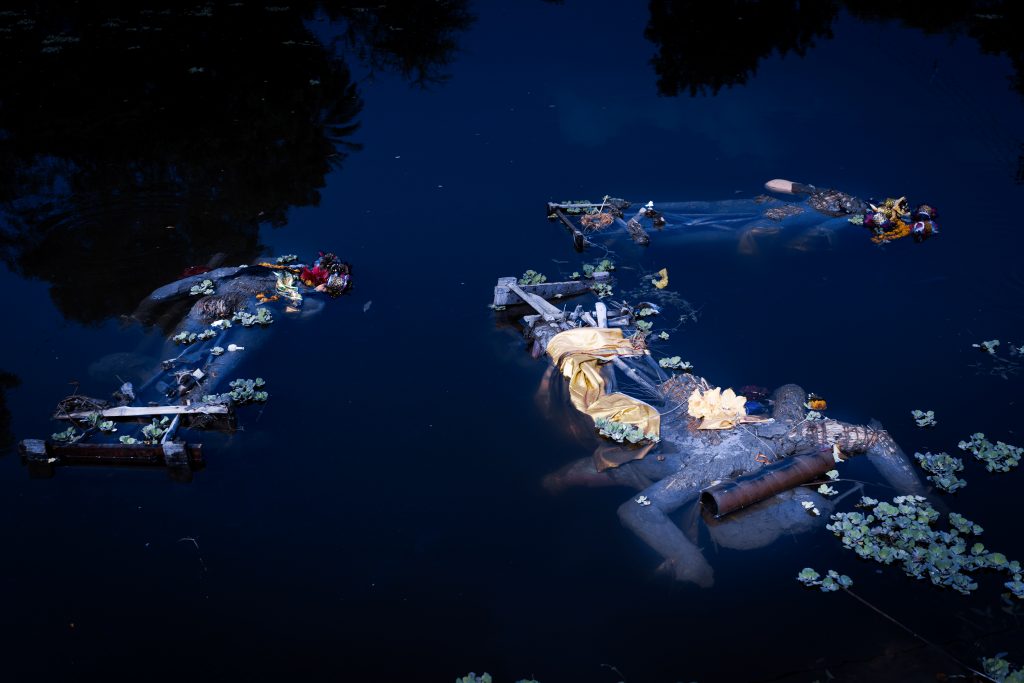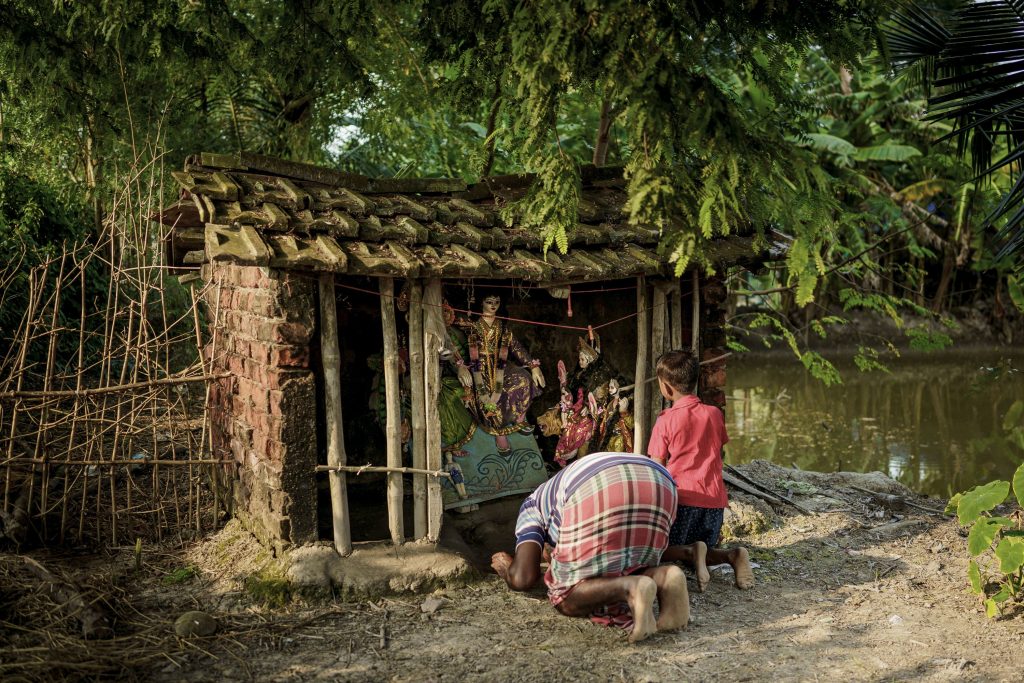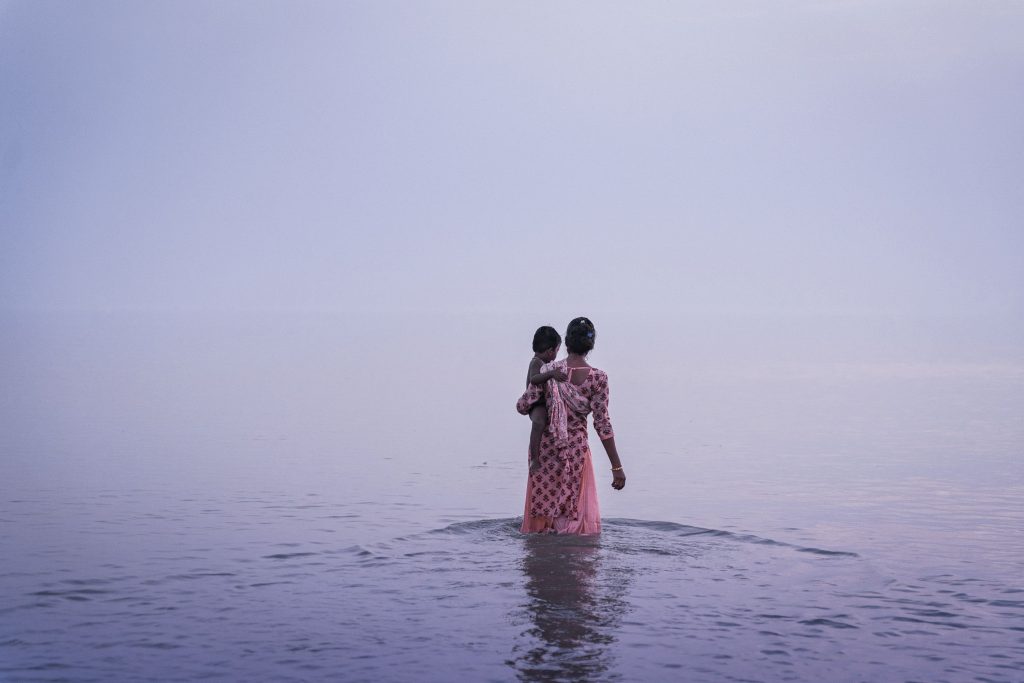In the Sundarbans, the Ganges delta region south of Kolkata, people have lived for decades in a fragile balance between land and sea, in a shifting landscape where islands constantly change shape and tides set the rhythm of daily life. But this balance has begun to collapse over the past 20 years. Monsoons have become stronger and more unpredictable, destroying villages and leaving the land uncultivable for years, while droughts grow longer and harsher. Rising sea levels have made the water increasingly saline, with consequences for people’s health, agriculture, fishing, and coastal erosion. It is estimated that more than 200,000 square kilometers of land have already been swallowed by the sea.
At this crossroads between climate change, government inaction, and a lack of economic opportunities, women and men are left to face the consequences largely on their own. Agriculture and fishing are becoming less and less viable, forcing many men to migrate to the cities in search of work, while women stay behind to bear the burden of this hostile environment.
The absence of meaningful government investment in such a rural region—already dismissed as having no future—further isolates the population. People like Minoti Modal, a byagrabidhaba (a “tiger widow”), whose husband was killed by a Bengal tiger while fishing in the protected mangrove forest and who therefore received no government compensation, or Bhabatosh, one of the few fishermen who has not yet left, spending hours each day at sea to catch just enough to survive, embody this daily struggle.
And yet, there are also initiatives of resilience and hope, such as the planting of mangroves, a tree fundamental to the ecosystem and vital to mitigating the destructive impact of the monsoons.
Here, climate change is not an abstract idea. Its consequences are a daily reality that the population must confront every single day.
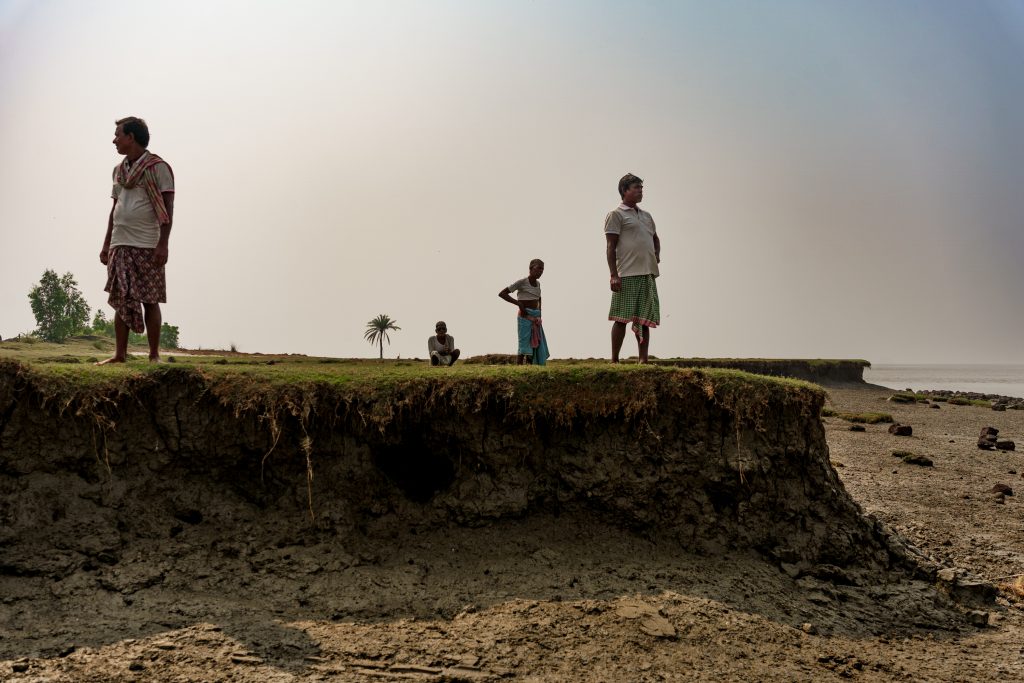
Fishermen stand on the eroded coast of Sagar island which is expected to completely disappear by 2050
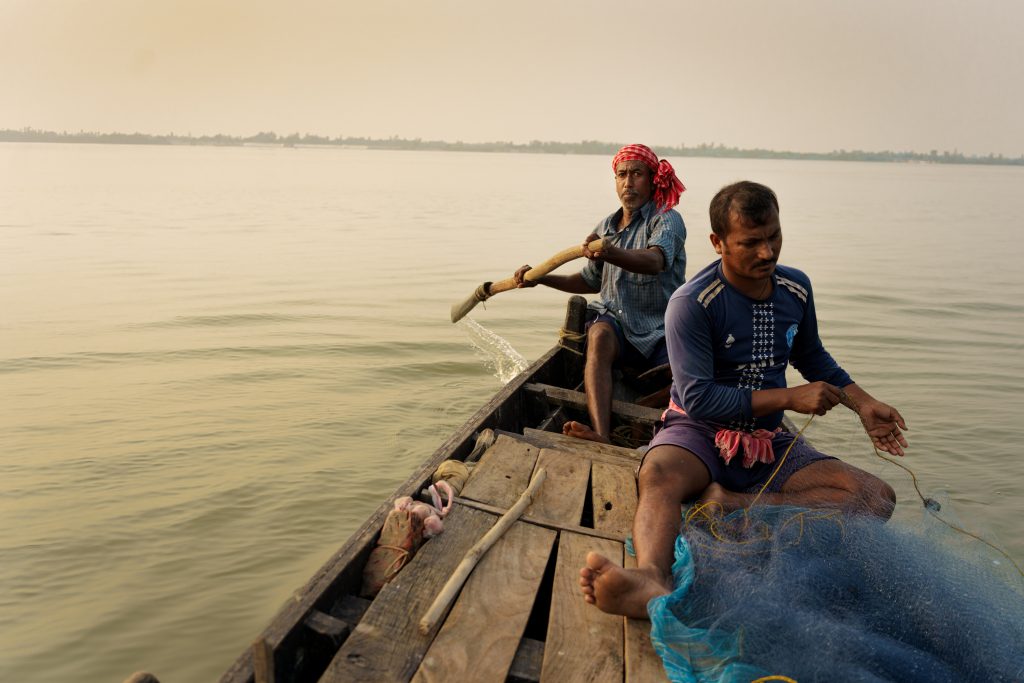
Osoni Mondal and Surojit Mondal go out fishing on a dinghi a small traditional wooden boat off the coast of Bally Island Because of the decline in fish stock cause by climate change fishermen have to dig deeper and deeper in the forest risking dangerous encounters with the local wildlife in particular the famous Bengali Tiger
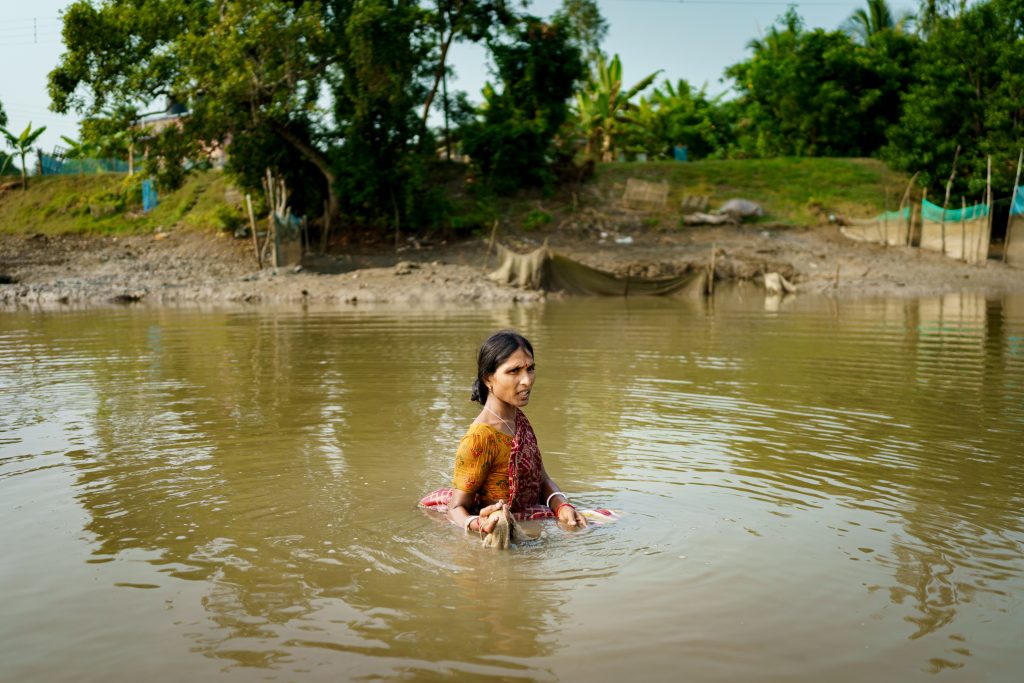
Shuktara Das submerges herself in the brackish waters of the Sundarbans to catch small fish and crabs The effects of climate change in the region especially the rising salinity of the water and increasingly unpredictable and catastrophic cyclones force most women to work odd jobs to sustain their households br br br br br br br br br
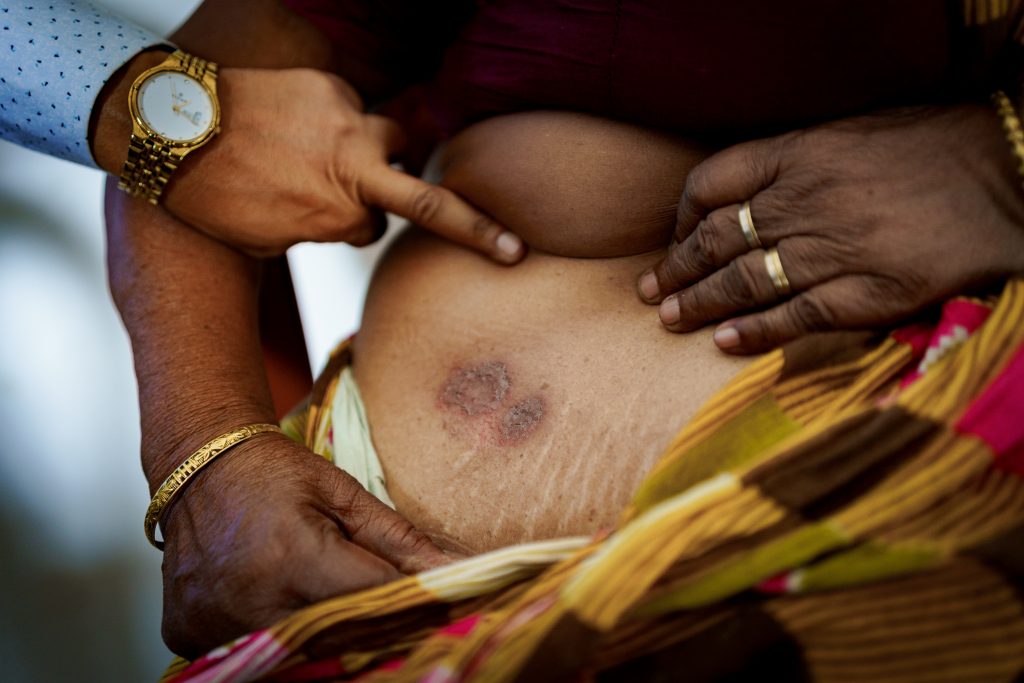
Shuktara Das shows an eczema on her skin during a visit from a volunteering doctor caused by her spending most of her days submerged in brackish water Government and institutions are almost absent from the region so people have to rely on Ngos for healthcare and education
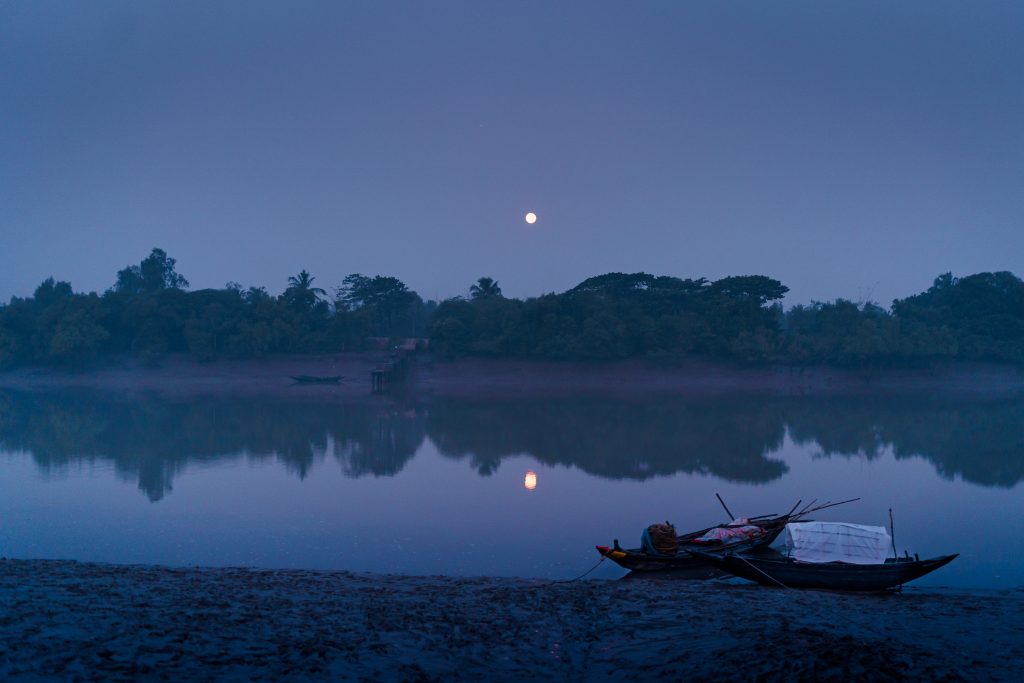
The moon is seen over a creek In what is known as the land of tides the moon is critical part of daily life determining when a channel can be crossed or when the rice can be planted
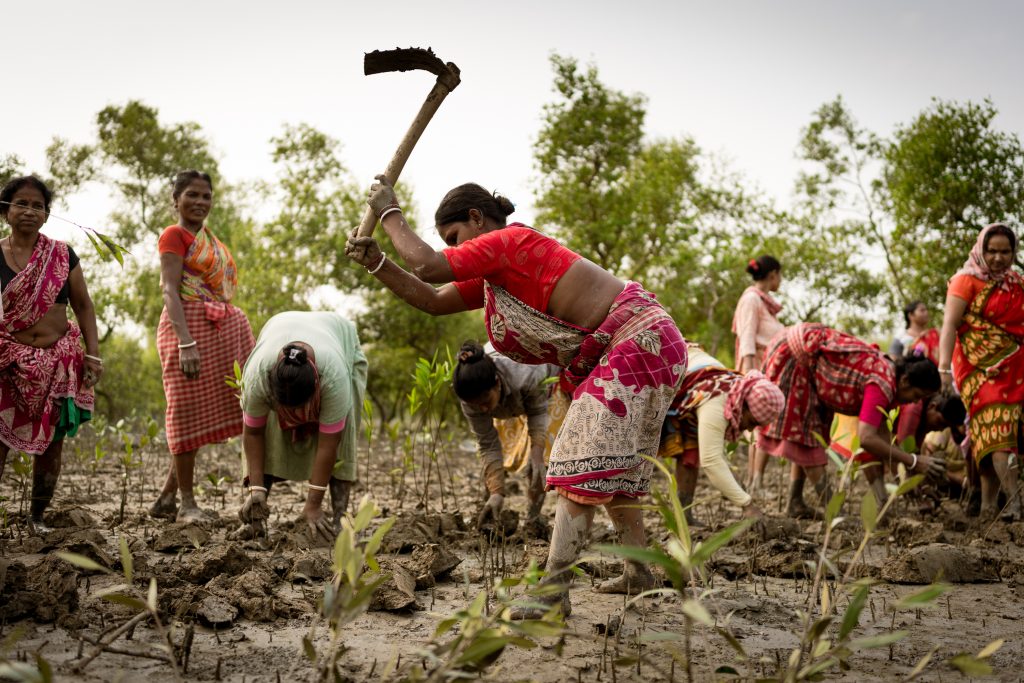
Women plant mangrove saplings in Jharkali island Mangroves are a fundamental part of the ecosytem contrasting the coastal erosion caused by rising sea levels and acting as a barrier against the increasingly violent monsoons
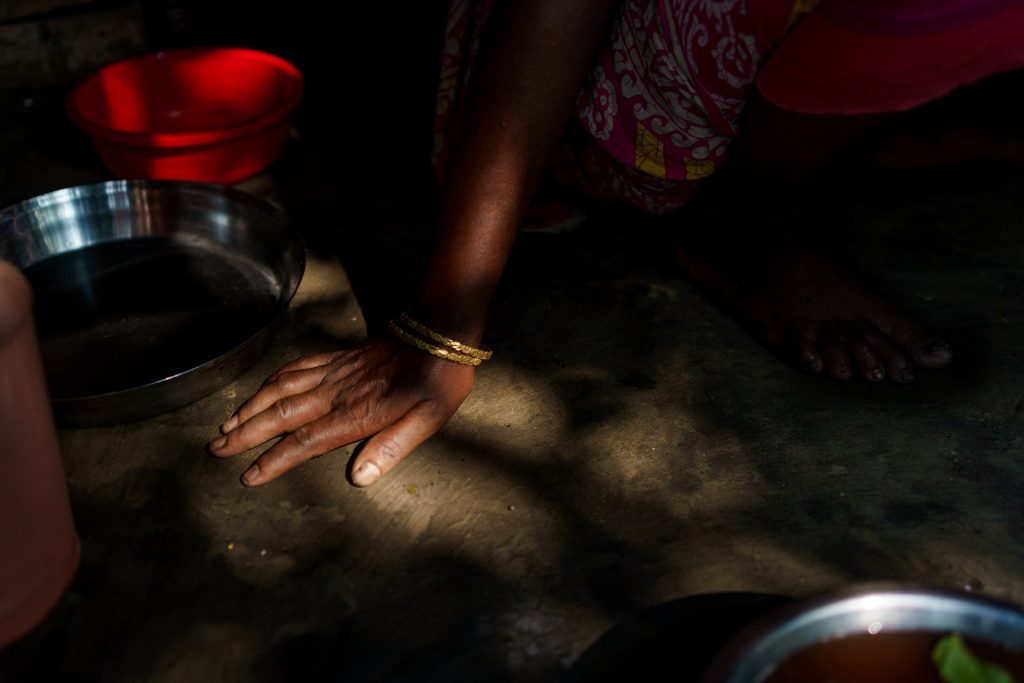
A golden bracelet typically worn by widows is seen on Minoti Mondal whose husband Mrinal who was fatally killed six months earlier in a Bengal tiger attack It is estimated that at least 50 people mostly traditional fishermen die each year from such attacks and many more are injured Widowed women are left trapped in a deep social stigma which makes it very difficult for them to find work or maintain a social life
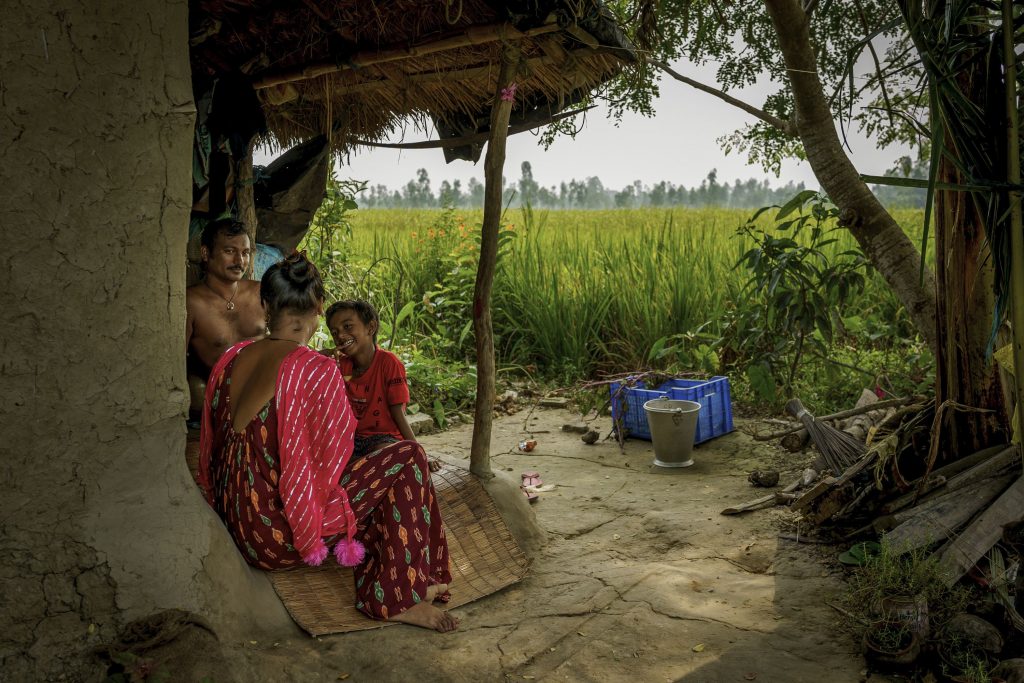
Surojit a local traditional fisherman and farmer spends some time with his family in their mud hut Most of his time is spent in the channels of the surrounding forests fishing risking attacks from wildlife everytim
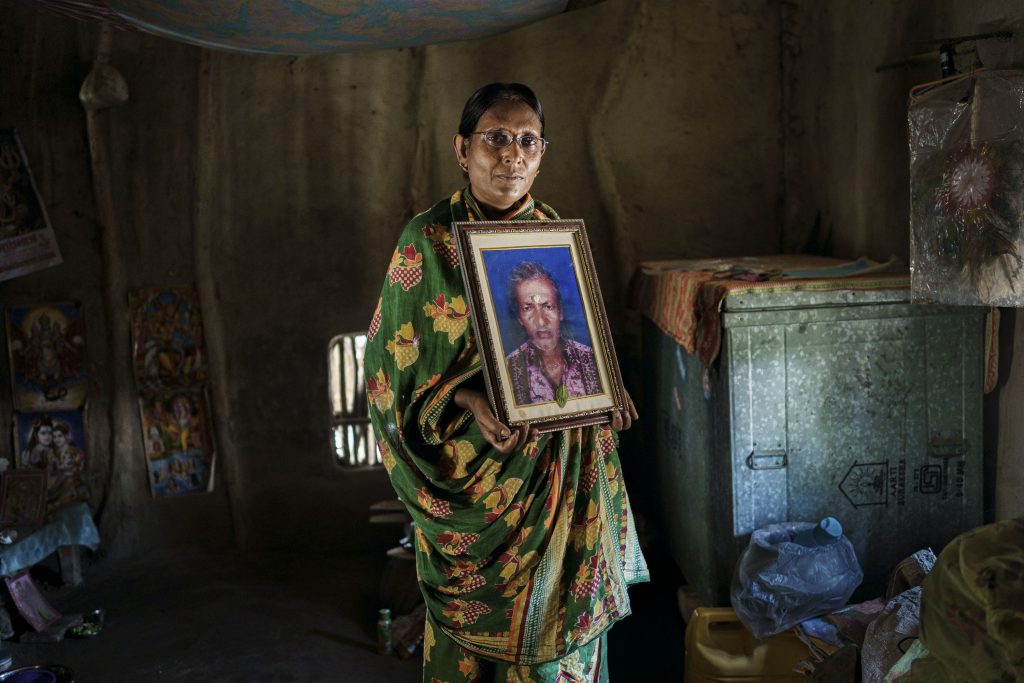
Minoti Mondal poses with a portrait of her late husband who was killed by a Bengali Tiger 6 months earlier It is estimated that at least 50 people mostly traditional fishermen die each year from such attacks with many more left permanently injured and traumatized Widowed women are left trapped in a deep social stigma which makes it very difficult for them to find work or maintain a social life
